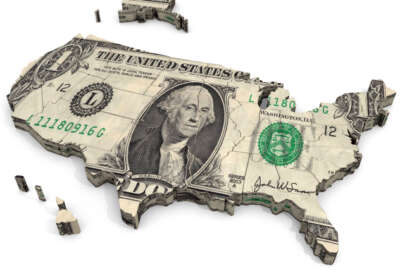A look inside the federal pay mailbag
The White House gave its clearest indication yet on where it's going with federal pay in 2022.
Federal employees got a little more clarity last Friday on next year’s pay raise.
President Biden announced his intention to implement an across-the-board pay raise of 2.2% for most civilian employees in 2022, plus a 0.5% locality-based pay adjustment. The total? On average, a 2.7% federal pay raise, in line with what the White House and Congress are eyeing for the military.
We use words like “average,” “most” and “intention” on purpose because federal pay is complicated, and there are plenty of seemingly tiny nuances that can actually make a big difference for employees.
Plus, it’s only August, and technically things can change between now and the end of the year.
Still, the end of this month is a big deadline in federal-employee-world, because it’s the president’s deadline for a submitting his plans for pay to Congress.
With the announcement usually comes a couple emails, Tweets, other questions and comments, and a whole lot of opinions. This past Friday’s news was no different.
So with that, I figured I’d open up the “mailbag” to address some of them.
So is this 2.7% raise a done deal or what?
Nope! Not technically. A 2.7% federal pay raise isn’t official until the president signs an executive order making it so.
Expect one usually around the holidays. Former President Trump signed the 2021 pay raise order on New Year’s Eve, making this federal workforce reporter groan.
Of course, this is a simple approximation of what might happen with federal pay this year. Congress, technically, could legislate a pay raise that differs from the president’s proposal, though that doesn’t seem particularly likely this year.
Still, in the event Congress wants to legislate something different, it can, usually through an omnibus spending package. If the president signs it until law, he must issue an executive order implementing whatever number Congress legislated.
If Congress stays silent on matters of federal pay, again, which seems likely this year, the president will just implement whatever he originally proposed to Congress.
Is there an exception?
Yes, technically.
We saw this happen in 2016, when former President Obama proposed (and initially implemented!) a 1.6% federal pay raise earlier in the year, then changed his mind in December and gave feds a 2.1% bump for 2017.
This was a surprise, and I certainly wouldn’t expect to see this happen too often. But it’s why we caution against saying pay raise decisions are final until they truly are, and even so, we’ve seen retroactive raises in recent years.
Why isn’t it likely that Congress will legislate its own federal pay raises for employees in 2022?
Congress is full of surprises, but considering the House has a narrow Democratic majority and a 50-50 split in the Senate, it doesn’t seem like members will go out on a limb to break with the White House on this particular topic.
Plus, Congress has a lot to do between now and the end of year.
Like what?
Members need to avoid a government shutdown, raise the debt ceiling and pass a bipartisan infrastructure bill into law. Congress also needs to hammer out a budget reconciliation agreement, pass some of discretionary budget law to fund the federal government and pass the annual defense authorization bill.
Why do you say most federal employees will get an average pay raise?
A majority of federal employees will see a pay raise that’s awfully close to a 2.7% increase over their 2021 salary.
But not everyone. Some employees are members of the Senior Executive Service, where salaries are different. Others have special rates because they’re a judge or a member of a special personnel system.
We use the word “average” because it is truly that. Depending on where you work, your raise might technically sit a notch or two above or below that 2.7% number based on whatever locality pay region you’re in.
Locality pay was originally meant to ensure federal workers living in a given area of the country were paid salaries that are roughly competitive with what private sector employees could expect to make for the same type of work.
Since the cost of paying workers in, say, Washington, D.C. or San Francisco is higher than it is for Portland, Maine.
Take a look at the comparison of locality pay rates we created for the 2020 federal pay raise as an example. That year, Congress legislated a 3.1% average raise for feds.
Federal workers in Portland, Oregon, got a 3.11% pay bump in 2020, while D.C.-based employees got a 3.52% raise.
The difference is in decimal points, but the details matter.
Isn’t a 2.7% raise a little low?
No comment.
Isn’t a 2.7% raise a little high?!
Again, no comment.
Nearly Useless Factoid
By Alazar Moges
The General Sherman Tree, located in the Giant Forest of Sequoia National Park in Tulare County, California, is the world’s largest tree. It stands 275 feet (83 m) tall, and is over 36 feet (11 m) in diameter at the base.
Source: National Park Service
Copyright © 2024 Federal News Network. All rights reserved. This website is not intended for users located within the European Economic Area.
Nicole Ogrysko is a reporter for Federal News Network focusing on the federal workforce and federal pay and benefits.
Follow @nogryskoWFED






